If you have been thinking about using cameras on your construction project, be it for monitoring progress, or for time-lapse recording, or even for security, here are 16 factors to consider.
These are pulled from Remontech’s 12 years of experience installing and maintaining construction cameras.
If you have any questions, feel free to contact us.
1. Power
 In construction, power is not always available everywhere around the site. When considering installing a camera to monitor your construction project, keep in mind that cameras and other equipment necessary to make them work will need power.
In construction, power is not always available everywhere around the site. When considering installing a camera to monitor your construction project, keep in mind that cameras and other equipment necessary to make them work will need power.
Here are some factors to consider:
- Cameras and other equipment will need power for the entire duration of the project. If your project is relying on temporary power, make sure that it is one of the first services to be brought to site and the last to be removed.
- Generators can be handy in construction, but they do not provide a perfect source of power. The voltage generated by these units are not perfect sine-waves, and the fluctuation and imperfection will create an interference on the camera’s image. This is true especially for analog cameras running off of 120V.
- Solar power can be an alternative, however, you will be surprised at how much panels and batteries you will need to keep a simple camera running 24/7.
The bottom line: Ensure that you will be connecting your camera system to a quality, reliable power source that will be available throughout the duration of your construction project.
2. Internet
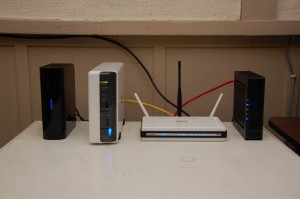 For you to be able to share the images from your construction camera with the world, you will need to connect it to the internet in some way.
For you to be able to share the images from your construction camera with the world, you will need to connect it to the internet in some way.
Also, your cameras will be transmitting large quantities of data in the form of snapshots or video, which even in normal circumstances would require a high-quality internet connection.
Construction sites, especially greenfield ones, typically provide challenges for internet connections. There is usually no infrastructure present in the form of phone lines or cable TV, which are the typical way residences and businesses connect to the web.
Over the years Remontech has faced almost every possible situation when it comes to securing a good internet connection in the middle of nowhere.
Here are some factors to consider:
- Your camera system has the potential for using a lot of bandwidth and data. Make sure that your internet connection provides unlimited transfer rates or you will be in trouble. There are ways to get around this issue if unlimited services are absolutely not available at your site. However, it is certainly better to exhaust all possibilities before going that route.
- The internet speed advertised by providers usually refers to the top download speed. Your camera will not be downloading anything, but uploading data out of your construction site. When hiring your internet connection, make sure you ask them what is their upload speeds.
- Though you might not be able to have an internet connection at your camera location, it is possible to get a connection to your trailer and connect to your camera wirelessly. We have done this countless times over the years and it works really well.
The bottom line: construction cameras need a stable internet connection that will allow them to transfer tons of data 24/7 without breaking the bank.
3. In-house vs. Outsourced
 Because Remontech provides this service, you might think I will always tell you to outsource it to, well, us.
Because Remontech provides this service, you might think I will always tell you to outsource it to, well, us.
However, it may not be necessarily the case.
If you have in your team personnel knowledgeable in IT, IP or CCTV cameras, and available for installation and maintenance, then you might consider trying it yourself.
Here are some factors to consider:
- Maintaining cameras in construction sites takes work and ongoing maintenance.
- Recording and editing of video may require software that are developed only by companies providing construction camera services
- Companies like Remontech have been doing this for years. The technology and what’s possible to do with it change rapidly and constantly.
The bottom line: If you have the internal know-how and the resources available to install, maintain, record, and edit the data, go for it. Otherwise give us a call at +1-519-207-2268.
4. Location for Mounting
The cameras and other necessary equipment will need to be mounted somewhere.
This location will have to be in a place that will remain undisturbed during the project. Also, you will need a good vantage point from which to see all the construction activity that you need to keep an eye on.
Some factors to consider:
- In our experience, it is always better to find a place offsite to install the cameras. Is there a building with a flat roof across the street you could use?
- Poles provide a great vantage point, but remember: these cameras undoubtedly will need to be adjusted or maintained, so ensure that you have easy access to them. Poles are great but not very accessible.
- Height: some cameras, especially dome cameras, cannot adjust to point higher than the horizon. In other words, you can’t make them look “up.” If those are the cameras you are planning on using, make sure your location for mounting them is higher in elevation than the construction project itself.
- Is this location going to remain undisturbed throughout the project?
The bottom line: choose a location for mounting that is high enough, provides easy access, and that will remain undisturbed.
5. Progress of Construction
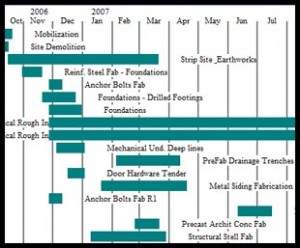
Here’s an opportunity to save you a headache: think about how the construction project will progress physically over time.
Here are some factors to consider:
- What will be built first? How this activity be captured?
- What will come next? Are the cameras going to have to be removed for the next construction phase to take place? If yes, would it be possible to mount them elsewhere for the first phase?
- Can several fronts be captured from a single vantage point?
The bottom line: choosing locations with progress in mind will avoid unnecessary reinstallation for cameras and other monitoring equipment.
6. Activities of Interest
It is virtually impossible to document every single corner of a construction project, so decisions need to be made as to what is most important to document.
If we are installing monitoring equipment as a tool for project management, it is important that we are keeping an eye on activities that will have the most impact on the project.
This usually translates into monitoring activities that are part of the critical path of the project schedule.
When making decisions such as
- How many cameras are needed?
- Where should they be mounted?
- What phases of the project are most important for cameras to capture?
A great place to start would be to look at the gantt chart and single out all activities in the critical path. They may not make the most interesting video, but they will certainly have the most impact on the project. It is important to ensure that they are being done on time and within scope.
7. Sunlight
 Construction cameras, like any other cameras, are sensitive to light.
Construction cameras, like any other cameras, are sensitive to light.
When deciding vantage points and other locations for mounting, it’s important to remember that it is best to locate cameras so the sunlight is behind them.
This typically means having cameras look north if the project is in the northern hemisphere, or south, if the project is in the southern hemisphere.
It is important to remember that each project is unique. There might be nearby structures, bodies of water, parking garages, and other factors that may create glare and undesirable light sources.
8. Site Layout
Site layout is extremely important when planning for construction cameras.
For best results, have these factors in mind:
- Install cameras in a location that will remain undisturbed. Preferrably, a location outside the construction site is the best alternative.
- Poles, fences, trailers, and other structures offer great locations to mount equipment, but it is important to remember that there is a likelihood that those might be moved during construction.
- Ease of access for maintenance purposes. Cameras and other monitoring equipment need maintenance from time to time and it is important to be able to access them when necessary.
9. Type of Camera
There are many different types of cameras in the market. Here are some examples:
All-in-one cameras
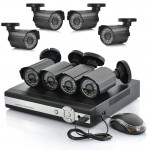 These are the cameras you typically see as being sold as part of a surveillance package. You can even find these at consumer electronics stores. Though they are fairly straightforward to assemble and use, they lack very important features:
These are the cameras you typically see as being sold as part of a surveillance package. You can even find these at consumer electronics stores. Though they are fairly straightforward to assemble and use, they lack very important features:
- No adjustable lense for zoom and focus
- No internal heating/cooling/blowing
- Typically only available in standard definition
- B or C-list manufacturers
Cameras inside an environmental enclosure
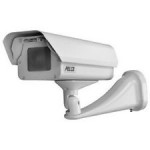 These systems offer flexibility and reliability, especially in colder/hotter climates. Remontech has been using these types of setup since we started our business in 2002, and we have had them in some of the most harsh environments.
These systems offer flexibility and reliability, especially in colder/hotter climates. Remontech has been using these types of setup since we started our business in 2002, and we have had them in some of the most harsh environments.
These units will have a heating element that helps keep the camera from freezing. They also have a blowing fan that prevents condensation on the lens.
Lenses can be chosen and replaced depending on the scene to be monitored.
The model and make of the camera can also be chosen based on specs, or other criteria.
It is by far the most professional and flexible way to have reliable equipment on construction sites.
10. Type of Lens
 There are many types of lenses that can be used with construction cameras. Choosing the right type will depend on various factors:
There are many types of lenses that can be used with construction cameras. Choosing the right type will depend on various factors:
- How far are the cameras from the action to be monitored?
- How large/wide is the construction activity?
Lenses typically allow for the adjustment of focus and zoom. Choosing lenses can be a complicated task, but there are some interesting calculating tools one can use to help with the design, such as this one.
11. Privacy Concerns
Many construction sites will border residential areas. Others will be located next to industrial plants, or even government buildings.
It is always important to keep privacy concerns in mind. Here are some questions you may want to consider:
- Is the construction site next to a government building, or industrial site, or residential area?
- Are the cameras looking at any location that might pose a privacy concern?
- Are the cameras looking at any location that might become the interest of law enforcement?
- Even if the cameras are not recording any area of concern, will the cameras be seen as a threat to privacy by stakeholders?
12. Type of Enclosure
If you have decided to use a system based on cameras inside environmental housings, here are some factors to consider:
- Is the camera going to be indoors or outdoors? Though sometime they look similar, outdoor housings are watertight and will protect the camera from the elements.
- If the camera will be installed outdoors, what will the weather be like? In colder climates, housings with heating elements can be used, which will melt ice buildup and snow on the camera lens.
- Power rating: if the housing is equipped with a heater and blower, it will need a supply of power. What voltage is available nearby? What voltage does the camera use? Can you get a housing that has the same voltage specifications as the camera so a power source can be shared?
- Mounting: where will the housing be mounted? A wall? A pole? A railing? It is important that when sourcing an enclosure, a suitable mounting bracket is part of the package.
13. Fixed vs. Pan/Tilt/Zoom
Depending on the location and what you are trying to capture, you may want to invest on a camera that allows you to remotely pan, tilt, and adjust its zoom level.
If the camera is being used for long term time-lapse recording, you might want to choose a fixed camera. A camera that is moved all the time do not yield a good time-lapse video.
A typical setup for Remontech will include 2 or 3 fixed cameras and 1 PTZ camera strategically placed. That usually provides a good combination and coverage for the entire site.
14. Live Viewing
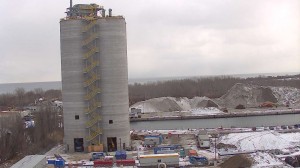 If you are planning on using cameras on your construction project for recording the progress of activities, remember that it is also possible to have a live feed available on the internet.
If you are planning on using cameras on your construction project for recording the progress of activities, remember that it is also possible to have a live feed available on the internet.
We have participated in projects where clients did not want the live feed available. They were just interested in recording construction activities.
In other cases, the client only cared about the live feed, and not so much about the recording.
In any case, it is important to remember that this feature is available. Here are some reasons why you might want to have a live feed available on the internet:
- Collaboration: when talking about the project with other stakeholders, it can be extremely helpful for everyone to be looking at live images from the construction project. This is true especially if the project is remote.
- Supervision: for owners and project managers, it will be helpful to convey to contractors and subcontractors that you might be looking. It’s like being on site all the time.
- Bragging: you might want to share the link to the live feed on your website to share it with the world. This can be a great marketing tool.
- Clarity and openness: we have clients in the public sector who wanted the live feed broadly available as a way to show transparency and reassure the public that the construction project was moving well.
15. Recording
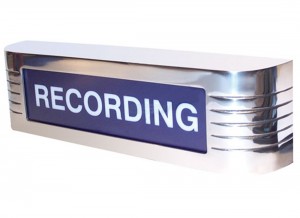 Will you need the images taken from the construction site recorded?
Will you need the images taken from the construction site recorded?
This almost sounds like a silly question – if the cameras are there, why wouldn’t you?
Well, recording adds a layer of complexity to a monitoring system.
For example:
- Instead of just a live stream, recording imagery requires a place to store data
- Storing data poses a number of questions: where would you store? Locally or remotely? How much storage do you need?
- Who owns the recording? The construction project owner? The contractor who is paying for the monitoring service?
- Data: construction projects lasts for months, sometimes years. This generates an enormous amount of data. How will it be managed? By whom?
So before requiring recording, ask yourself if it is really necessary or just a “nice to have.”
At Remontech we are able to provide a much simpler (read “more affordable”) system for clients only interested in the live feed.
On the other hand, some clients are mostly interested in the recordings.
When thinking about your construction monitoring system, remember to specify whether recording is really required.
16. Maintenance
And finally, maintenance. Keeping a camera system running on a volatile and aggressive environment such as a construction site takes work.
Are you set up and willing to take up this extra scope? Do you have the expertise in-house to take care of maintaining a camera system and the other systems that go along with it (networking, power, etc).
As an example, Remontech offers a turn-key system in which the equipment is not sold to the client, but installed and maintained by us. Outsourcing this service can help you focus on what is most important to you: managing your construction project.
I hope this was helpful!
Have you used construction cameras in your projects? What was your experience like? What would you add to this list?
Have a great day!
Leave a Reply